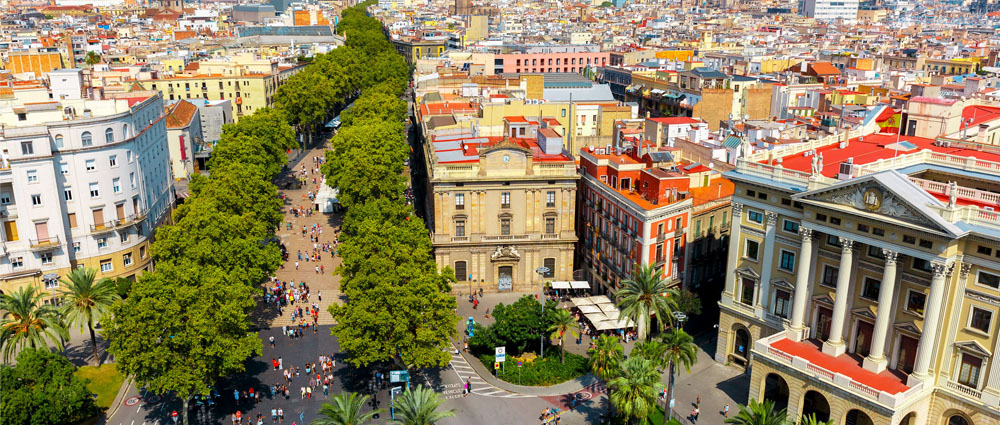The pedestrianisation of urban spaces has transformed many great cities. With various degrees of vehicle-access, the boulevards provide better accessibility and mobility for pedestrians.
Paved spacious walkways, curated greenery, vibrant shopping and dining choices can boost business activities and improve the aesthetics of the city.
Barcelona’s La Rambla is a great example of one of the world’s best public spaces: comfortable, accessible, sociable and teeming with activities.
Lined with lush trees and benches, its 1.2 km road stretched from the Plaza de Catalunya to the Columbus monument, cutting through the city center. Flanked with reduced-speed vehicle access roads and very wide walkway in the middle, pedestrians roam freely among the bustling stalls in the open-air market.
Here you can find souvenir and newspaper kiosks, flower stalls, street artists, art installations as well as famous landmarks such as the arty Boqueria Market, the city's largest and most important market, the former red-light district Barri del Raval, MACBA art museum and the architecturally stunning Barri Gòtic.
An example closer to home is Singapore’s Orchard Road. This south-bound 2.2km high-end shopping belt stretches from Orchard Hotel across the Scotts Road–Paterson Hill junction passing Orchard MRT and ends at Handy Road.
Its wide pavements and tall angsana trees give ample shaded space for pedestrians while the road itself is still accessible to vehicles. It has extensive underground pedestrian walkways between the malls underneath the street, connected to the rail system, for easy and safe pedestrian mobility.
Another famous example of a working pedestrian boulevard is the shopping haven London’s Oxford Street. Vehicle access is only limited to buses and taxis, and coupled with subway stations located at each end, the public can access the road easily.
The street is visited by more than 4 million people per week, making it one of the busiest across the capital. Oxford Street is planning for full pedestrian-zone by 2020 and presently has been experimenting with traffic-free days along with its neighbour Regent Street.
TRX’s Lifestyle Quarter is creating similar vibrant pedestrian boulevard with its Jalan Gading project. The 450 metres pedestrian walkway will extend Bukit Bintang shopping avenue to Jalan Barat towards TRX’s The Exchange, by creating a bustling alfresco shopping zone lined with shops, restaurants and cafes as well as art and culture installations.
The road will be equipped with open spaces, green gardens, water features and social facilities to encourage crowds and shoppers. With plans for brightly lit night bazaar, this sleepy lane will get the much deserved facelift.






